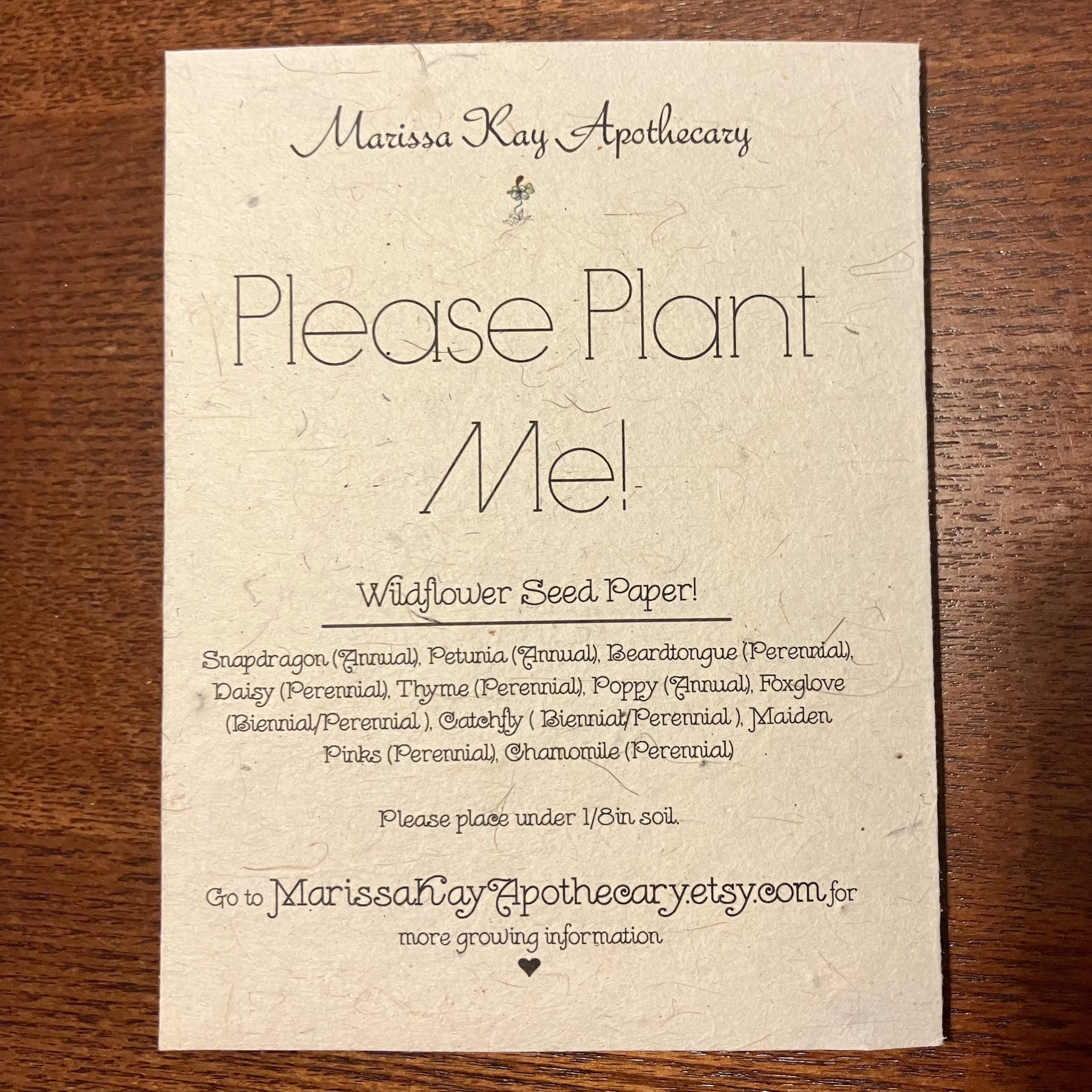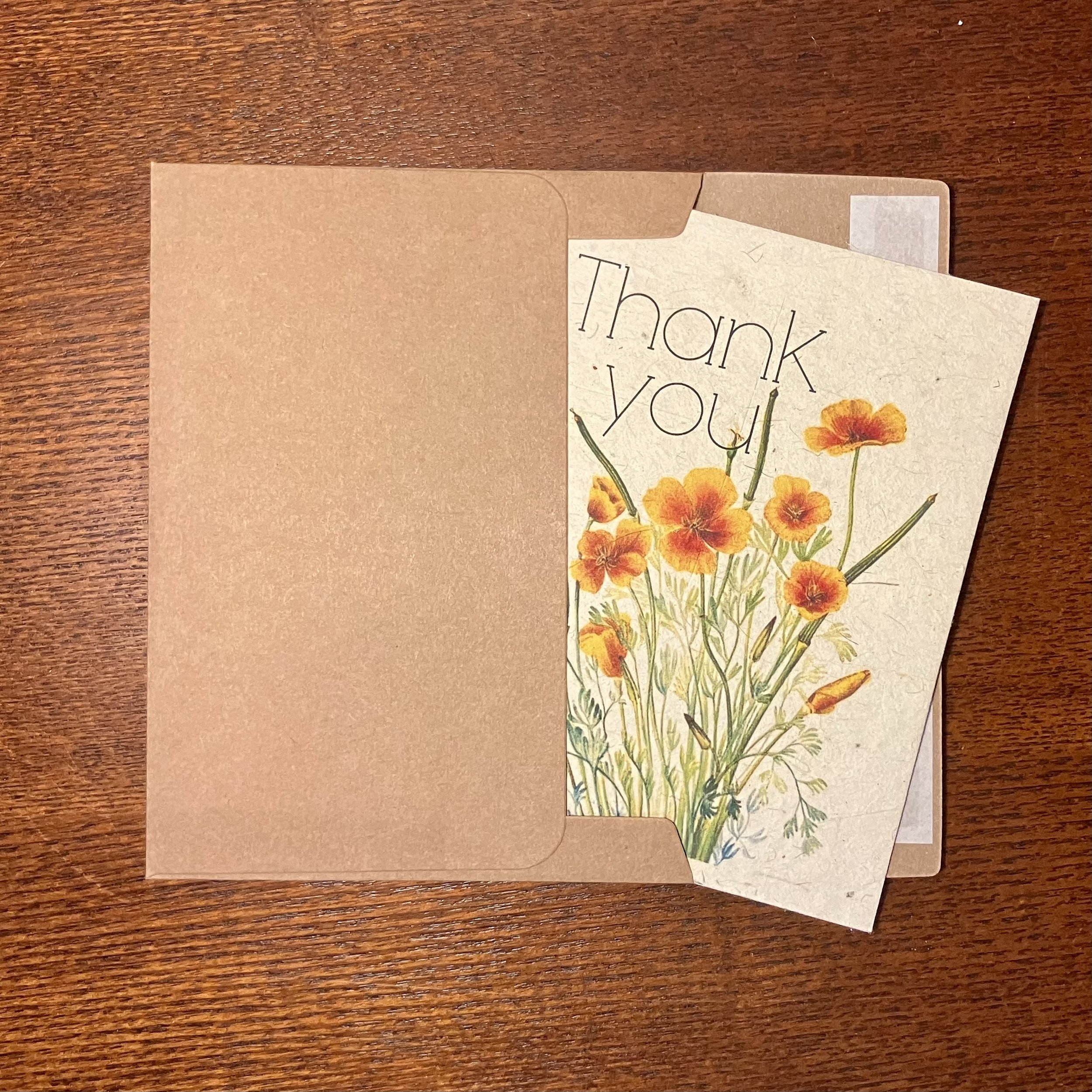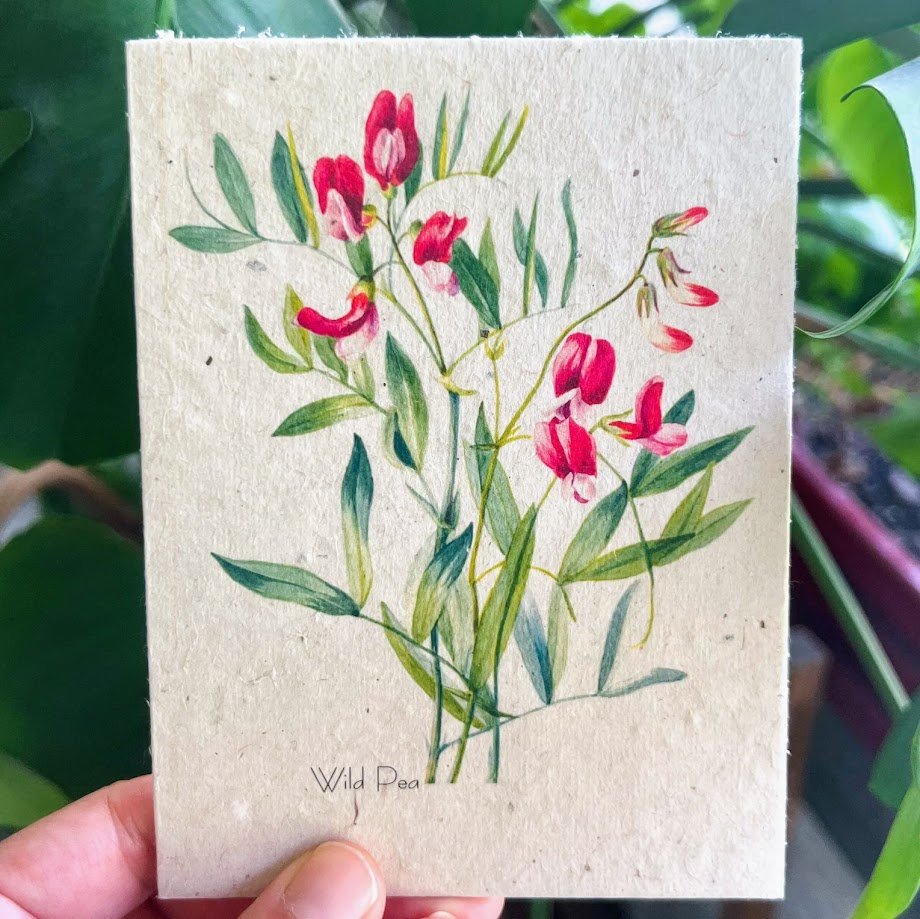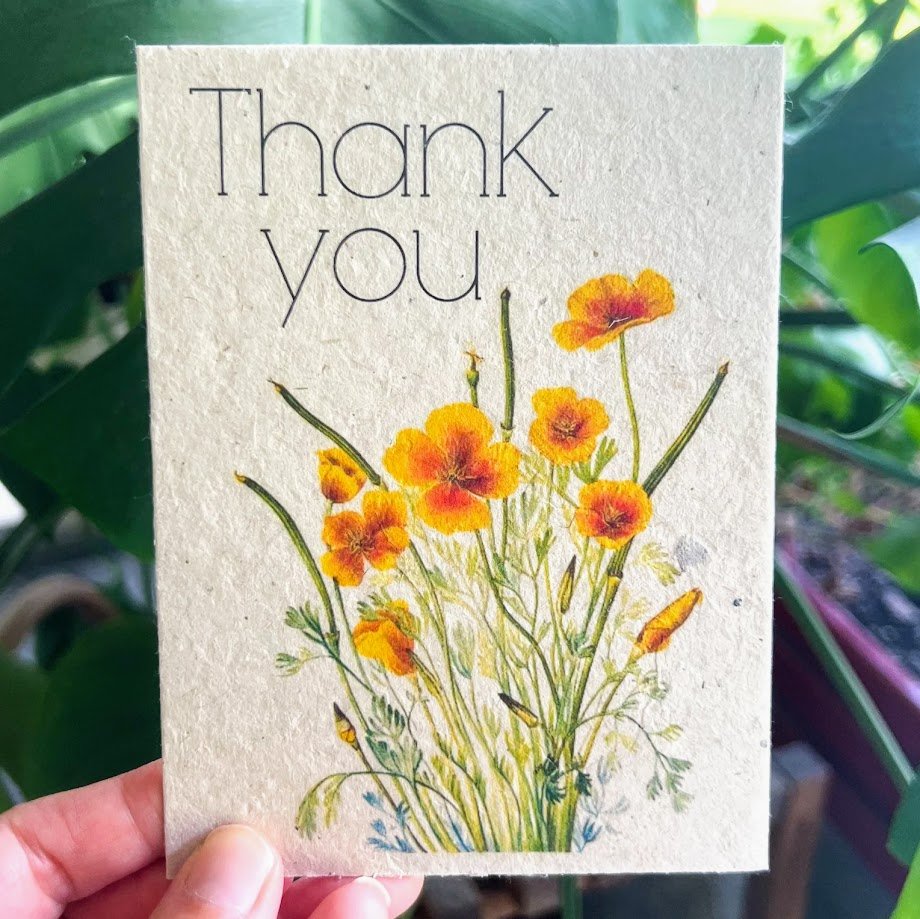Card Stock Seed Paper
Cards Blank On Inside. .
Kraft Envelopes Made Of Recycled Paper.
4.5 x 5.75 in.
From the maker:
--This handmade lokta paper is made in the highlands of Nepal by rural craftspeople in an environmentally friendly process with 50% recycled content. The raw material for our select paper is the Daphne bush. It is farmed and harvested from 3-4 year old plants that are cut down and stripped of their bark. The plant is not destroyed when cut down, it regenerates from the root. The cane like stick, once its bark is removed is dried and used to heat the villager’s homes, to provide fuel for cooking and also for the production of the paper. All of the water used in the paper production is reclaimed and reused.---
**These designs come from Mary Morris Vaux Walcott (July 31, 1860 – August 22, 1940) she was an American artist and naturalist known for her watercolor paintings of wildflowers. She has been called the "Audubon of Botany". She found and identified all the plants she painted. Except the one with blue flowers. It comes from Furuya Korin. A master meiji era painter and designer of woodblock-printed books, Furuya Korin was highly influenced by the Rinpa (Rimpa) movement of Ogata Korin (1658-1716)



























